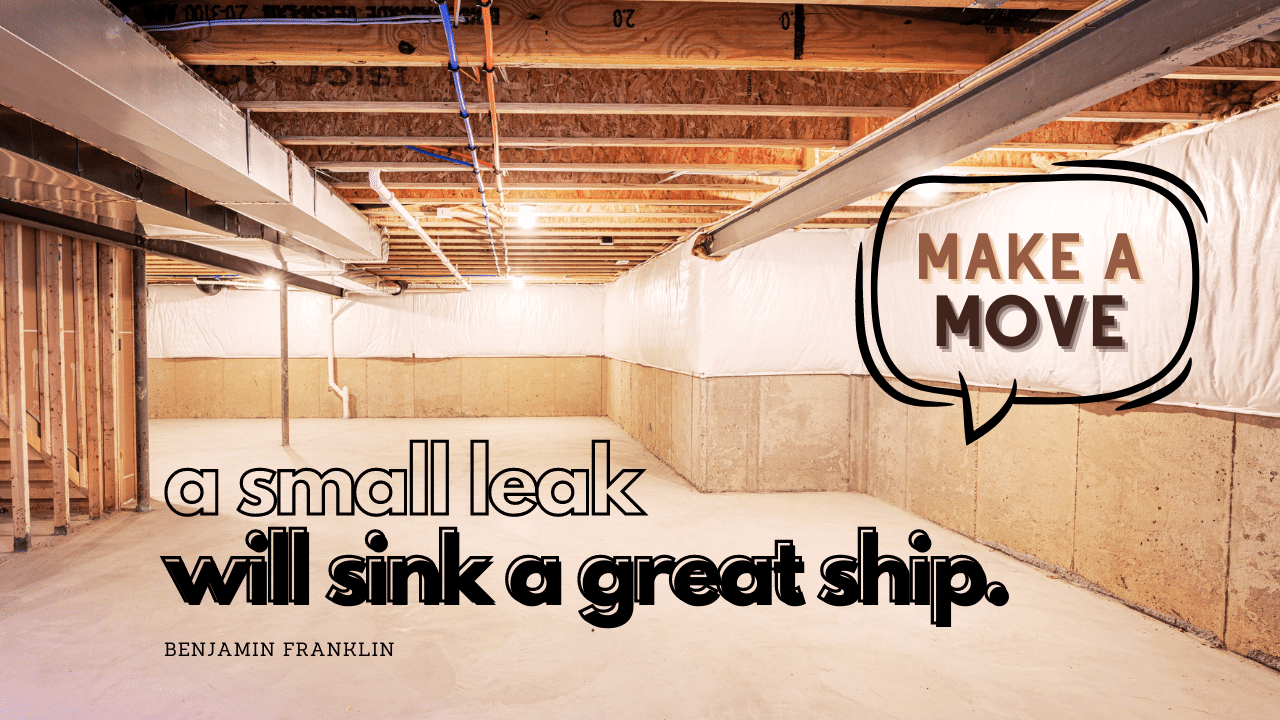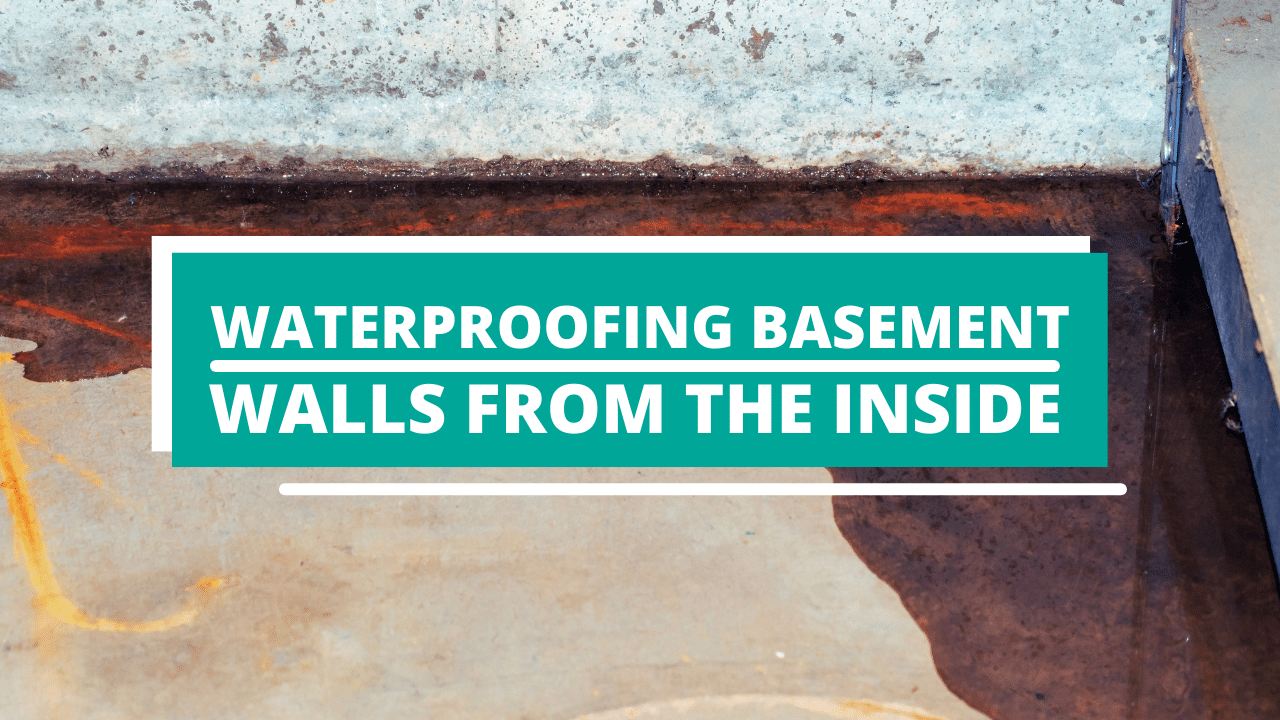Many houses within the United States have moisture issues in their basements. It’s a prominent issue, and it could be extremely harmful to the occupants and the integrity of the building. Needless to say, if you’re experiencing moisture issues, you need to act on the issue quickly to ensure the problem doesn’t become worse. But how can you waterproof the basement walls from the inside?
The primary way to waterproof basement walls from the inside is by using a concrete sealer. This is because it’s easy to apply (for any DIYer), cost-effective, strengthens your concrete and is considered highly safe. (Related: Basement Waterproofing Cost & Consumer Guide)
As you can see, applying a concrete sealer is the best way to waterproof your basement walls from the inside. With the right sealer and instructions, you’ll undoubtedly be able to effectively seal your basement walls in a matter of no time. Want to find out which concrete sealer we recommend, along with how to apply it? Great, see the below:
How to Waterproof Basement Walls from the Inside
Now you’re aware of the best way to waterproof your basement walls from the inside, we’re going to break down what sealer to use, why to use it, and how to apply it successfully to ensure your basement becomes watertight and damp free. But, before we get into that, we must first discover why your basement walls aren’t waterproof.
Why does Basement become Damp?
Developing an understanding of why your basement is becoming damp will provide you the answer to whether or not waterproofing your basement walls with a concrete sealer is the most effective way to eliminate dampness. Here are some reasons why a basement becomes damp:
- 1Underground Condensation - As you know, basements have an incredibly cool temperature when they’re not accompanied by household equipment like a drier or washer. Because of its cool environment, the basement cannot hold as much moisture in the air. This means when the basements air mixes with air from the upper rooms of the property, it creates condensation.
- 2Broken Pipes and Wall Cracks - Including the above, it could be due to broken pipes or wall cracks. Wall cracks can easily be repaired by using a concrete epoxy and won’t require you to cover the entire room in waterproofing. The same goes with broken pipes, like rain gutters, French drains, and sewer overflows could potentially be the leading causes of water being transported to your basement walls.
- 3Unused Taps, Sinks and Toilets - Something else that can cause basements to become damp are unused taps, sinks, and toilets. This occurs because the water slowly seeps out over time, causing it to evaporate into the air making the environment damper. Removing these or sealing the water pipes will be the best type of waterproofing in this event.
- 4Basement Laundry - Warm and wet environments can also make your basement walls damp. The humidity percentage rises because of the warm laundry equipment and also the wet clothes.
- 5Incorrect Landscape Grade - Lastly, the grade of your landscape could also be the main reason why your basement isn’t dry. If you grade your landscape to transfer rainwater towards your basement, this could be the main issue of concern. Therefore, changing the grade will give you much longer and better results of waterproofness.
As you can see, there are various reasons why your basement is experiencing dampness. If you believe your basement is damp due to the above issues, then acting directly on the problem may be the better and longer-term solution.
Needless to say, using a concrete sealer will undoubtedly help with the above moisture issues. However, you’ll put your walls under much more stress if you don’t solve the above problems directly.
What Concrete Sealer should you use to Waterproof a Basement?
When it comes to the world of concrete sealers, there are many brands to choose from. Like all products, some are much better than others. However, to save yourself the hassle of investing in a poor concrete sealer, there’s one market leader you should consider purchasing, this is RadonSeal’s Penetrating Concrete Sealer.
This is because it’s well-known within the industry for being one of the best concrete sealers you can use when waterproofing a basement from the inside. Since it was developed back in 1990, the solution hasn’t been altered because of its superb commercial and residential concrete protection.
For the most effective usage, you’ll want to use this sealer on concrete, concrete blocks, limestone, grout, and various other cementitious-related building products. Considering the main purpose of this sealer was to seal concrete, it does much more than that. Included with its sealing advantages, you’ll also find that it strengthens the wall and assists with reducing radon gas transmission, which are just more reasons why you should consider using this concrete sealer.

How to Waterproof your Basement with a Concrete Sealer
Now you understand what’s causing your basement to become damp, along with what type of concrete sealer you should invest your money into, you can now start waterproofing your basement.
As suggested above, if your basement is experiencing any of the above moisture issues, it’s recommended to act on them first before applying the concrete sealer. This will offer a much better applying and curing environment.
When you feel comfortable that you’ve solved the issue, you can then apply the concrete sealer. This is how to accomplish it effectively:
1. Prepare Surface
First, you’ll want to prepare the surface to ensure the sealer will be applied correctly. Failing to do this may result in you having unwaterproofed areas on your basement walls, which could develop into more significant problems further down the line.
When preparing the surface, you’ll want to remove any tile adhesive, oils, efflorescence, paints, sealers, and anything else that could affect the concrete sealer from penetrating the concrete. If you’re unsure whether or not your concrete walls are entirely prepared for applying the sealer, you may want to clean them with a vinegar and water mixture. This will clean any excess oils, etc, which you cannot see with the eye.
Including the above, you’ll want to repair any cracks that are on the wall. There are two types of cracks you can encounter in a basement: these are horizontal and vertical. Note, if a crack is larger than 1/8” wide or is horizontal, you’ll want to hire a professional to solve the issue. This means you should only be repairing any cracks yourself that are smaller than 1/8” in width. If you undergo this yourself, using an epoxy kit like the one from Polygem is superb.
2. Vacuum
Now you’ve cleaned the wall, it’s time to use a strong vacuum. With a long-spouted hose, you’ll want to remove any crumbling concrete, mortar, dirt, and dust.
If you’ve fixed any cracks, ensure you’ve left the appropriate amount of time for the epoxy and sealer to cure. Failing to do this may result in the crack reappearing.
3. Apply Sealer
After undergoing the above, it’s time to apply the sealer. The best and most effective way of achieving this is by emptying the entire basement. However, if you’re not able to do this, you may want to do one wall at a time and move the contents from that side to the other.
The best way to apply the sealer is through a hand pump or sprayer. Here you’ll be able to fill either of the spray solutions up with the concrete sealer and evenly apply it to the surface.
If you’re going to use RadonSeal, you’ll receive around 200 to 225 square feet per gallon, but this may differ from brand to brand.
There you have it, waterproofing your basement with a concrete sealer is really that easy. All it really requires is the correct approach and execution. Needless to say, this isn’t rocket science and something that most DIYers can undergo without hiring a professional to help them.
However, we spoke about waterproofing a concrete wall. But, some property basements are made from different materials. If your basement is either made from stone or brick, don’t lose hope. It is possible and the same difficulty as the above. Want to find out how to waterproof a stone or brick basement wall? Check out the below:
Can you Waterproof a Stone or Brick Basement Wall?
We understand that not all properties come with concrete poured basements, and that’s why we’ve included this section within the post. Here’s how you’re able to seal a stone or brick basement wall:
People that have stone or brick basement walls struggle with the thought of having a damp-free space. But with the right sealing products, you’re really able to make them watertight, damp-free, and a much better living area for the occupants.

Alternative Waterproofing Methods for Basements
Although applying a concrete sealer is the most affordable and best way to waterproof a basement from the inside, there are alternative methods you can opt-in for that can provide those additional levels of waterproofness. These are a lot more money and will most probably require you to hire a professional to undergo the job. Here are some alternative methods you may want to consider:
Install a Sump Pump
If you have a serious water issue, then you may want to consider installing a sump pump. For those who don’t know, a sump pump helps drain water from your gravel bed below your basement’s foundations. Because of this, the gravel bed your basement is constructed on won’t withhold a lot of water because the sump pump system will drain it away from the property.
Installing a sump pump will cost around $900 to $1,500, but only having one pump may not be enough. Most of the time, this works more efficiently when you have at least two pumps active.
Interior Drainage Gutters
This next waterproofing solution is interior drainage gutters, and they work similarly to gutters you’ll find on all properties. This plastic channel system is installed around the basement perimeter, and it collects the water that is transferring from the outside and through the wall. When the drainage system collects the water, it extracts it away from your house to ensure moisture doesn’t build up in the air.
An interior drainage gutter will set you back around $3,000 to $6,000. However, this is considered a very sustainable method that works superbly for years to come.
Exterior Footing Drains
Including the above, you could also get exterior footing drains installed. But, this is without a doubt the most expensive option on this list of alternative waterproofing methods. An exterior footing drains will require the earth around your basement to be excavated. Then, the footing drains are installed around the perimeter of the foundation. The whole idea of the footing drains is to capture the water that’s on the wall and export it away from the house.
Getting this installed will set you back around $13,000 to $20,000, depending on the seriousness of the wall.
Interior French Drains
If you’re hiring a contractor to seal your basement with a concrete sealer, then they’ll probably recommend French drains. There’s sound reasoning for this, and that’s because it’s very effective at keeping your basement damp-free.
This will cost you around $5,000 to $9,000 to be installed, but it’s known to be one of the best installation methods for a damp-free basement.

